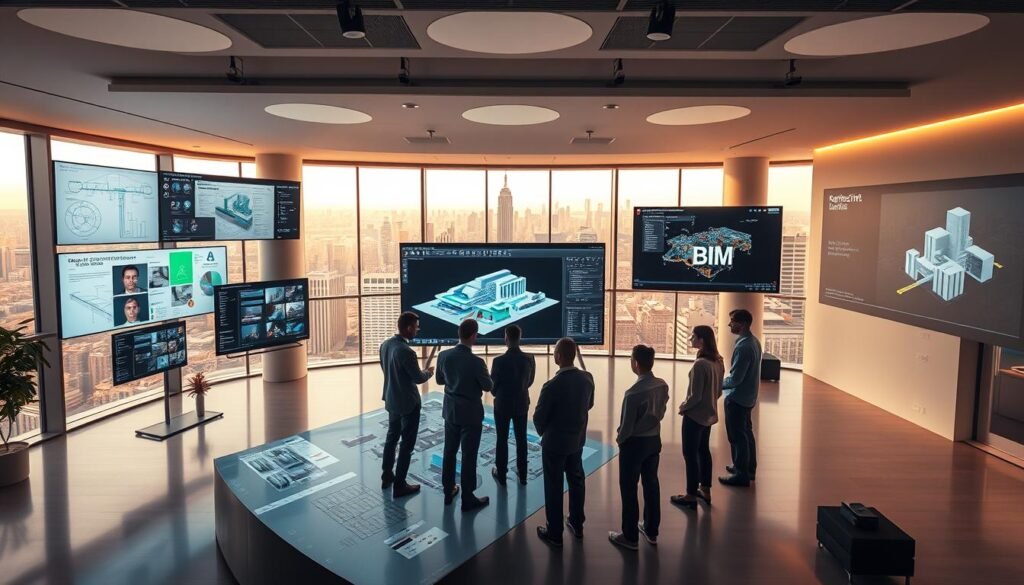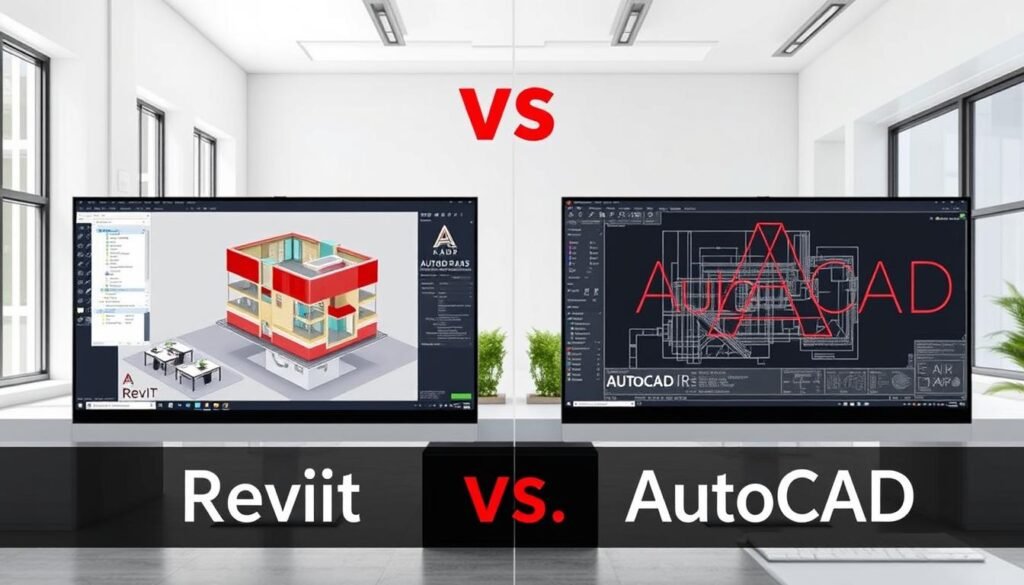The architecture industry is on the cusp of a significant transformation, driven by the adoption of Building Information Modeling (BIM). As the industry evolves, BIM is becoming an essential tool for architects, engineers, and construction specialists.
BIM offers a range of benefits, including improved collaboration, enhanced data management, and increased efficiency. By adopting BIM technologies, architecture firms can stay competitive and deliver projects more effectively.
As we look to the future, the importance of BIM will only continue to grow. With its potential to revolutionize the architecture industry, it’s crucial for professionals to understand how to prepare for this shift.
Key Takeaways
- Understanding the benefits of BIM in architecture
- Preparing for the future of BIM adoption
- Enhancing collaboration through BIM technologies
- Improving data management with BIM
- Increasing efficiency in architecture projects
The Evolution of BIM in Architecture
The evolution of BIM in architecture marks a significant milestone in the industry’s journey towards digitalization and sustainability. As BIM technology continues to mature, it is transforming the design and construction processes, enabling architects and engineers to create more complex and sustainable buildings.

What Is BIM and How It Transforms Design Processes
BIM is an intelligent 3D modeling process that allows architects, engineers, and construction professionals to plan, design, and manage buildings and infrastructure projects more effectively. By adopting BIM, architects can improve design accuracy, reduce errors, and enhance collaboration among stakeholders. BIM implementation involves integrating detailed digital models that contain both geometric and non-geometric data, facilitating better decision-making throughout the project lifecycle.
Current State of BIM Adoption in the United States
The United States has seen significant growth in BIM adoption across the architecture, engineering, and construction (AEC) industry. Many firms have embraced BIM to improve project outcomes and stay competitive. According to industry reports, the use of BIM software has become more widespread, with major companies leveraging BIM for complex projects.
| BIM Adoption Metrics | 2018 | 2020 | 2022 |
|---|---|---|---|
| Companies using BIM | 40% | 60% | 80% |
| Projects executed with BIM | 25% | 45% | 70% |
The table illustrates the increasing trend of BIM adoption in the U.S. AEC industry, highlighting the growing reliance on BIM for project execution.
Why BIM Is Revolutionizing the Architecture Industry
The use of BIM is revolutionizing the architecture industry by fostering enhanced collaboration, reducing costs, and improving environmental sustainability. This transformation is evident across various stages of architectural projects, from design through construction to operation.
Enhanced Collaboration and Communication
BIM facilitates enhanced collaboration among architects, engineers, contractors, and clients by providing a shared platform for project information. This leads to better communication and fewer errors due to outdated or incorrect data.
With BIM, all stakeholders can access the same up-to-date models and data, ensuring everyone is on the same page. This collaborative environment helps in identifying and resolving potential issues early, reducing costly rework and delays.

Improved Efficiency and Cost Reduction
BIM improves efficiency by automating many routine tasks and enabling more accurate planning and execution. This results in significant cost savings throughout the project lifecycle.
By utilizing BIM, architects and contractors can optimize material usage, reduce waste, and streamline construction processes. The table below highlights some key areas where BIM contributes to cost reduction:
| Area | Traditional Method | BIM Method |
|---|---|---|
| Design Time | Manual drafting | Automated modeling |
| Material Estimation | Manual calculation | Data-driven quantification |
| Clash Detection | Manual coordination | Automated clash detection |
Sustainability and Environmental Benefits
BIM supports sustainable design and construction practices by enabling detailed analysis of a building’s environmental impact. This includes energy consumption, carbon footprint, and material sustainability.
By analyzing various design scenarios through BIM, architects can optimize building performance and reduce environmental harm. This proactive approach to sustainability is crucial for meeting modern green building standards and regulations.
BIM in Architecture: Key Trends Shaping the Future Through2025
The integration of cutting-edge technologies into BIM is set to transform the architecture industry, driving efficiency and sustainability through 2025. As the industry continues to evolve, several key trends are emerging that will shape the future of BIM in architecture.
Integration with AI and Machine Learning
The incorporation of Artificial Intelligence (AI) and Machine Learning (ML) into BIM is revolutionizing design and construction processes. AI algorithms can analyze vast amounts of data to optimize building designs, predict potential construction issues, and enhance overall project efficiency. For instance, AI-driven BIM tools can automate routine tasks, allowing architects to focus on more complex and creative aspects of design.
- Enhanced design optimization through data analysis
- Predictive maintenance and reduced construction risks
- Automated routine tasks for improved productivity
Cloud-Based BIM Solutions
Cloud-based BIM solutions are gaining traction as they offer enhanced collaboration, scalability, and accessibility. By hosting BIM data on cloud platforms, project stakeholders can access and update information in real-time, regardless of their location. This trend is particularly significant for large-scale projects involving multiple teams across different geographies.
Key benefits of cloud-based BIM include:
- Real-time collaboration and data synchronization
- Scalable storage solutions for large project data
- Enhanced data security and backup capabilities
BIM and Digital Twins Technology
Digital Twins technology, closely linked with BIM, involves creating virtual replicas of physical assets to simulate, predict, and optimize their performance. In architecture, Digital Twins can be used to model building performance, test design iterations, and monitor real-time operational data. This integration is set to enhance the lifecycle management of buildings, from design through to operation and maintenance.
As these trends continue to evolve, the architecture industry will witness significant advancements in BIM, driven by technological innovation and the need for more efficient, sustainable practices. By embracing these trends, architects and industry professionals can stay ahead of the curve and shape the future of architecture through 2025 and beyond.
Essential Skills and Tools for BIM Implementation
The implementation of BIM technology requires a specific set of skills and tools that are essential for success in the architecture, engineering, and construction sectors. As BIM continues to transform the industry, professionals must adapt by acquiring the necessary technical skills and familiarity with BIM software.
Technical Skills Required for BIM Proficiency
To effectively utilize BIM, professionals need to develop key technical skills, including:
3D Modeling and Visualization Expertise
Proficiency in creating detailed 3D models is crucial for BIM implementation, enabling better visualization and analysis of building designs.
Data Management and Analysis Capabilities
BIM involves managing vast amounts of data, requiring professionals to have strong data analysis capabilities to extract insights and make informed decisions.
Step-by-Step Guide to Learning BIM Software
Mastering BIM software is a critical step in BIM implementation. Here’s a step-by-step guide to learning BIM software:
Starting with Autodesk Revit
Autodesk Revit is a widely-used BIM software. Beginners should start by learning its basics, including project setup, family creation, and model analysis.
Advancing to Specialized BIM Tools
Once familiar with Revit, professionals can advance to specialized BIM tools like Navisworks for project review and coordination.
Integrating BIM with Other Design Software
To maximize BIM benefits, it’s essential to integrate it with other design software, such as AutoCAD and Civil 3D, ensuring seamless data exchange and collaboration.
Training Resources and Certification Pathways
To support BIM skill development, various training resources and certification pathways are available, including online courses, workshops, and certification programs offered by software vendors and industry organizations.
| Training Resource | Description | Provider |
|---|---|---|
| Online Courses | Self-paced learning on BIM fundamentals and software skills | Udemy, Coursera |
| Workshops | Hands-on training sessions for BIM implementation | Autodesk, Graphisoft |
| Certification Programs | Industry-recognized certifications for BIM professionals | Autodesk, buildingSMART |
Overcoming Common BIM Implementation Challenges
Implementing BIM can be challenging, but understanding common issues and adopting best practices can help overcome these hurdles. Key strategies include:
- Developing a clear BIM implementation plan
- Ensuring data consistency and quality
- Providing ongoing training and support
Conclusion: Embracing the BIM Revolution in Architecture
The architecture industry is on the cusp of a revolution, driven by the adoption of Building Information Modeling (BIM). As discussed, BIM in architecture is transforming design processes, enhancing collaboration, and improving efficiency. The current state of BIM adoption in the United States indicates a significant shift towards digitalization in the AEC sector.
BIM adoption is not just a trend; it’s a necessity for staying competitive in the architecture industry. By leveraging BIM, professionals can deliver projects more sustainably, reduce costs, and improve overall quality. The integration of BIM with emerging technologies like AI, machine learning, and digital twins will further accelerate this transformation.
To remain relevant, AEC professionals must develop the essential skills and tools required for BIM implementation. This includes proficiency in BIM software, understanding of data management, and the ability to collaborate effectively. As the architecture industry continues to evolve, embracing the BIM revolution will be crucial for delivering innovative, sustainable, and efficient projects.

